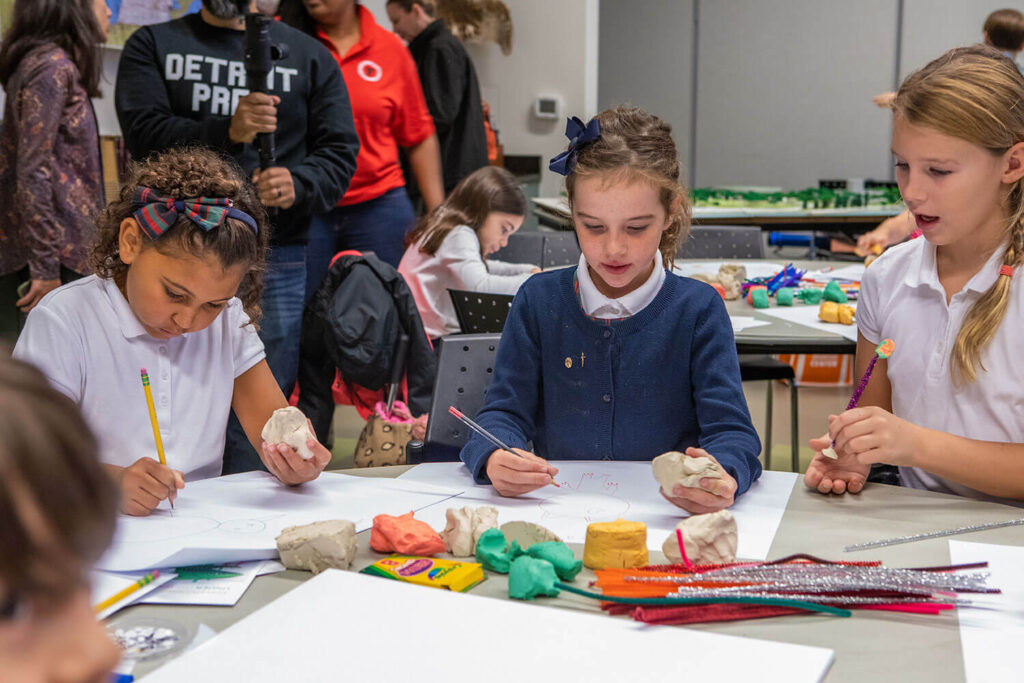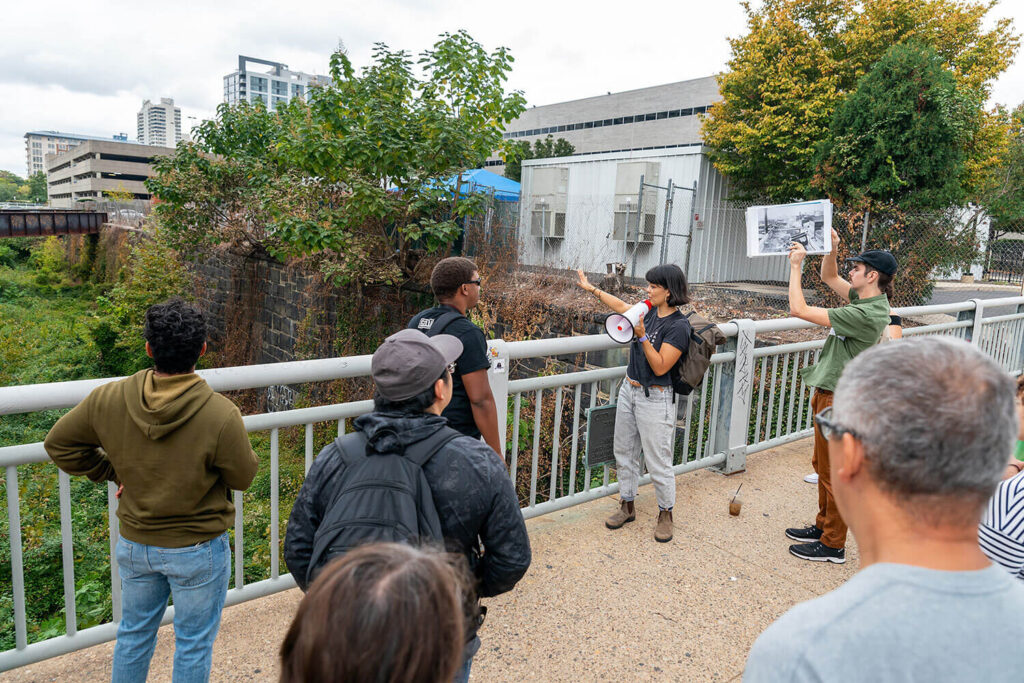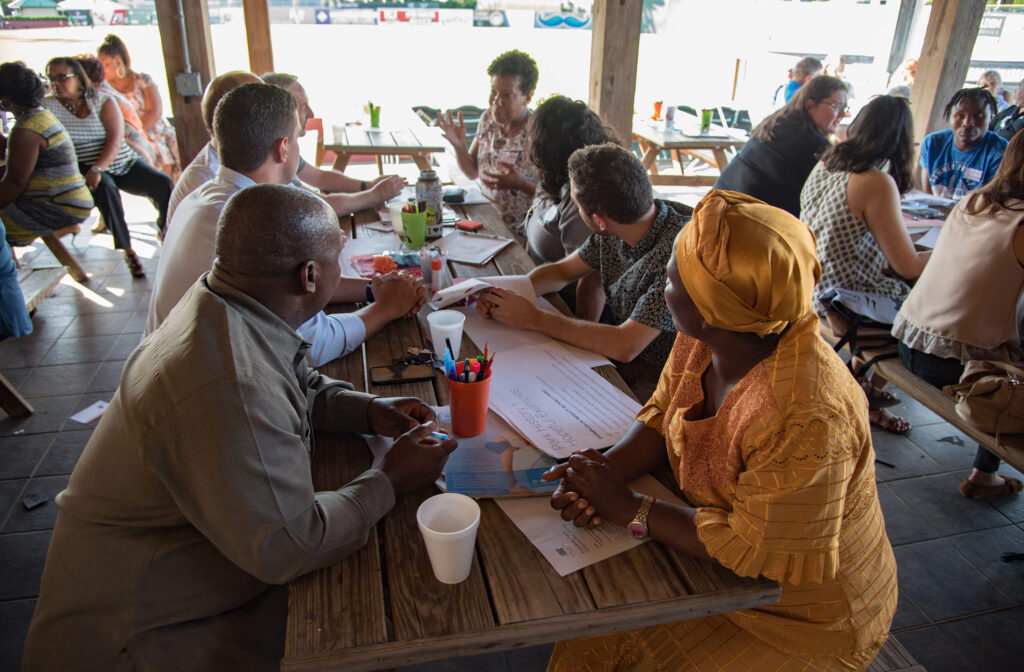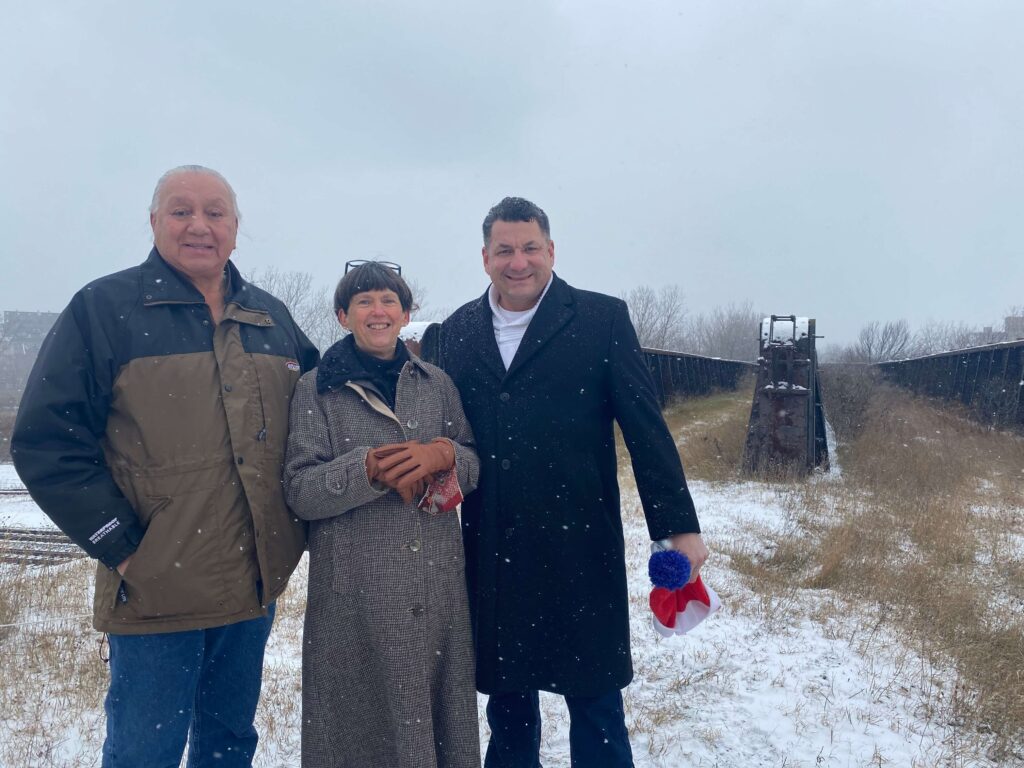Would you like to showcase your own work to embed equity in your infrastructure reuse project?
Embracing Community Advisers

Children design features of a Detroit Riverfront Conservancy playground. Credit: Detroit Riverfront Conservancy.
Some design ideas for Detroit’s 22-acre riverfront park were dreamed up 36,000 feet in the air, on flights to and from Philadelphia, New York, and Chicago.
As one part of an intensive community engagement process, the Detroit Riverfront Conservancy (DRFC) created a Community Advisory Team (CAT)—and then took its 21 members on the road. Divided into three teams, they covered three cities, to explore firsthand what makes a successful public space. The DRFC footed the travel bill and arranged group meetings with practitioners and site representatives in each city. “By visiting other parks, they were able to learn what other cities had done with their waterfronts to expand and adapt those ideas back here in Detroit,” said Rachel Frierson, DRFC’s director of programming.
After the trips, the CAT members met to prioritize the elements they wanted to see on Detroit’s riverfront. DRFC gave all their feedback to the design firms bidding on the project. When the final four firms publicly presented their designs, the advisory team members saw their voices represented.
“I think about this quote that our guide at Governors Island said to us, and it really stuck with me, that is to think about 100 years ahead. I think that’s what we have to do. We have to think about way down the line, children, generations coming behind us,” said CAT member Denise Kennedy after the trips.
The selection of the 21 advisers started with a public call for nominations. To ensure diverse voices were represented on the CAT, DRFC looked at gender, race, age, marital status, parental status, and geography of candidates. While providing valuable input into the design process, the CAT was also a way for the DRFC to expand its network of contacts and community groups and get their feedback. CAT members received stipends to host “kitchen conversations” and other convenings. As the project work continues, the advisory team has become a gateway to multiplying connections to other communities on the ground.
Project Org
Detroit Riverfront ConservancyRelated Toolkit Section
Examine HistoryRelated Tool
KNOW YOUR DEMOGRAPHICSSome design ideas for Detroit’s 22-acre riverfront park were dreamed up 36,000 feet in the air, on flights to and from Philadelphia, New York, and Chicago.
As one part of an intensive community engagement process, the Detroit Riverfront Conservancy (DRFC) created a Community Advisory Team (CAT)—and then took its 21 members on the road. Divided into three teams, they covered three cities, to explore firsthand what makes a successful public space. The DRFC footed the travel bill and arranged group meetings with practitioners and site representatives in each city. “By visiting other parks, they were able to learn what other cities had done with their waterfronts to expand and adapt those ideas back here in Detroit,” said Rachel Frierson, DRFC’s director of programming.
After the trips, the CAT members met to prioritize the elements they wanted to see on Detroit’s riverfront. DRFC gave all their feedback to the design firms bidding on the project. When the final four firms publicly presented their designs, the advisory team members saw their voices represented.
“I think about this quote that our guide at Governors Island said to us, and it really stuck with me, that is to think about 100 years ahead. I think that’s what we have to do. We have to think about way down the line, children, generations coming behind us,” said CAT member Denise Kennedy after the trips.
The selection of the 21 advisers started with a public call for nominations. To ensure diverse voices were represented on the CAT, DRFC looked at gender, race, age, marital status, parental status, and geography of candidates. While providing valuable input into the design process, the CAT was also a way for the DRFC to expand its network of contacts and community groups and get their feedback. CAT members received stipends to host “kitchen conversations” and other convenings. As the project work continues, the advisory team has become a gateway to multiplying connections to other communities on the ground.
Share this Case Study


